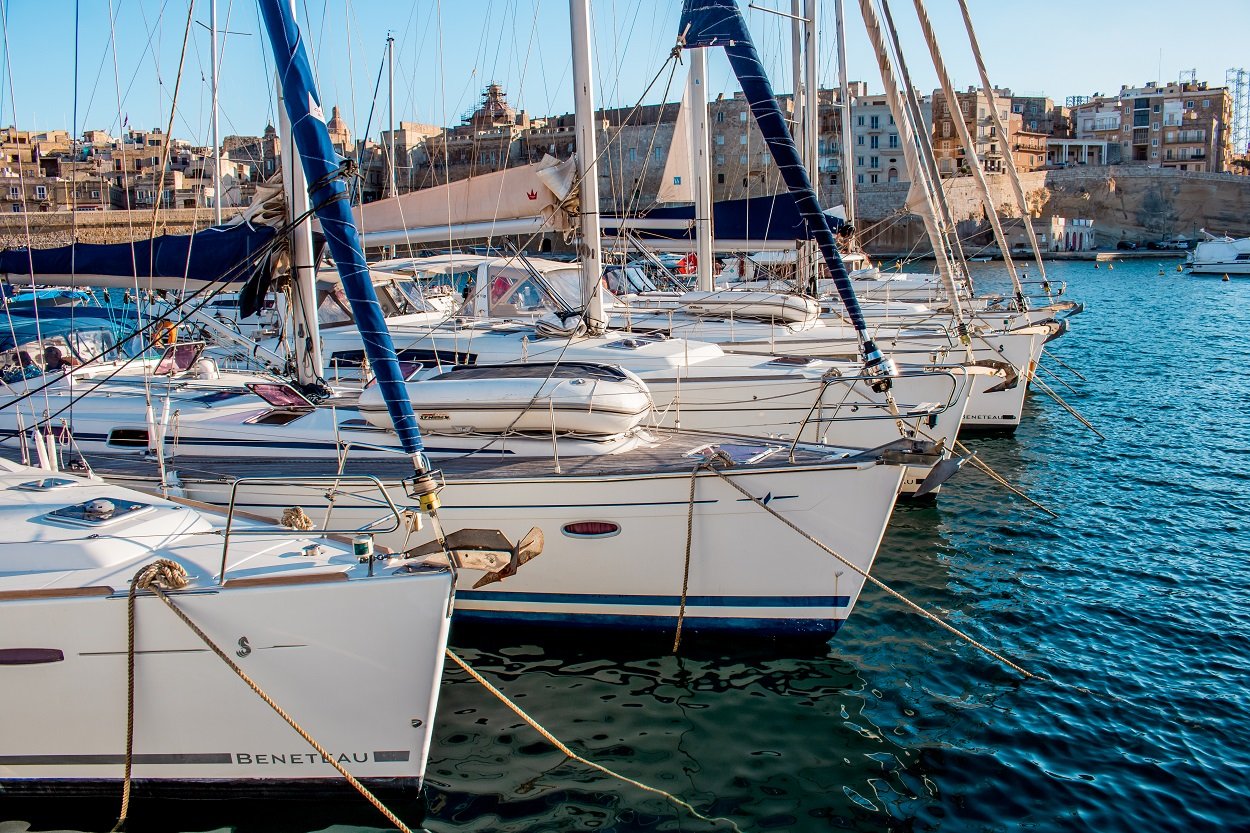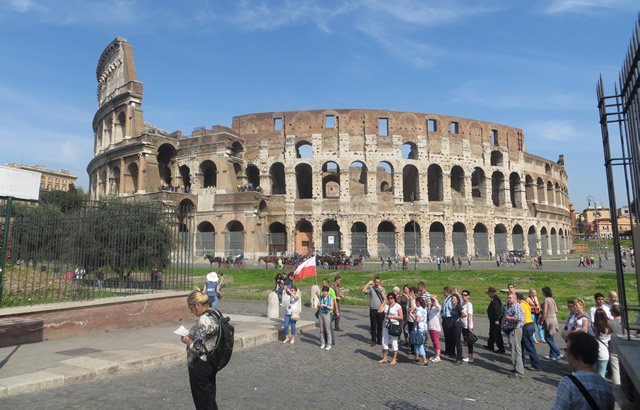Introduction to Walking Tours
Walking tours have gained significant popularity in recent years as a preferred method of exploring historic cities throughout Europe. These tours offer a unique opportunity for tourists and locals alike to engage with their surroundings in a more immersive and intimate manner. By traversing the streets on foot, participants are able to appreciate the rich architectural details, vibrant cultures, and storied histories that define Europe’s diverse urban landscapes.
The appeal of walking tours lies in their ability to provide a personalized experience. Unlike traditional tourist excursions that might rely on buses or other forms of transportation, walking tours encourage individuals to slow down, observe their surroundings, and absorb the local atmosphere. Tour guides often provide fascinating stories and insider knowledge, deepening the understanding of the city’s heritage. This interactive approach not only enhances the experience but also fosters a greater appreciation for the historical and cultural contexts of the locations being visited.
Additionally, walking tours can cater to a wide range of interests, from architecture and history to food and art. This versatility allows participants to choose tours that align with their personal preferences, making the experience even more enjoyable. Moreover, walking tours are often designed to accommodate various fitness levels, ensuring that everyone can partake in the exploration of the city’s finest attractions. For those looking to escape the oftentimes overwhelming nature of modern tourism, walking tours present an excellent opportunity to reconnect with the rich heritage that historic European cities have to offer.
In this blog post, we will delve further into the various aspects of walking tours, highlighting how they can enrich one’s journey through Europe’s captivating historical landscapes.
Why Choose Walking Tours in Historic Cities
Walking tours in historic cities across Europe offer a unique and enriching experience that goes beyond traditional sightseeing. One of the primary advantages of such tours is the opportunity to deepen cultural understanding. By traversing the cobbled streets and alleys at a pedestrian pace, participants can fully immerse themselves in the history and heritage of the location. Engaging directly with local guides often provides insight into the nuances of the culture that are typically missed during a brief bus stop. These guides can share stories, anecdotes, and historical context that breathe life into the landmarks, making history tangible and relatable.
Moreover, walking allows travelers to explore hidden gems that larger vehicles cannot access. Many historic cities are characterized by narrow lanes, charming squares, and picturesque neighborhoods that might otherwise be overlooked. On foot, visitors can take the time to wander off the beaten path, discovering quaint cafés, local markets, and unique shops that contribute to the character of the area. These spontaneous discoveries often result in memorable experiences that enhance one’s overall journey and provide a richer understanding of local life.
Additionally, choosing walking tours promotes sustainable travel, which is increasingly important in today’s context. With growing concerns regarding environmental impacts, walking is one of the most eco-friendly ways to explore historic regions. By reducing reliance on motorized transport, walkers contribute to lower carbon emissions and less congestion. This not only benefits the environment but also fosters a more relaxed atmosphere in which one can appreciate the beauty and tranquility of historic cities without the noise and pollution often associated with vehicular traffic.
In essence, opting for walking tours in European historic cities is not just a means of transport, but rather a gateway to richer experiences, sustainable practices, and a profound connection to the cultural heritage of the region.
Key Features to Look for in Walking Tours
Walking tours are a highly engaging way to immerse oneself in the cultural and historical fabric of Europe’s cities. When selecting a walking tour, several essential features should guide your decision. First and foremost, the knowledge and expertise of the guides can significantly influence the quality of the experience. A knowledgeable guide not only provides factual information but also shares intriguing anecdotes that animate the history and culture of the area, fostering a deeper connection to the location.
Another critical aspect to consider is the itinerary. A well-curated tour should highlight iconic landmarks, hidden gems, and significant historical sites, offering a comprehensive understanding of the city’s heritage. It’s beneficial to choose tours that have a thematic focus, such as art, culinary delights, or significant historical events. This thematic approach can make the experience more enriching and tailored to individual interests.
Group size is also an important feature to consider. Smaller groups often facilitate a more intimate setting, allowing participants to engage more meaningfully with the guide and their surroundings. This personal touch can enhance the overall enjoyment of the walk, as it promotes interaction and encourages questions. Conversely, larger groups can dilute the experience and make it more challenging to connect with the guide.
Furthermore, flexibility within the tour is crucial. Many top-rated walking tours offer options to adapt the itinerary based on the group’s interests or pace. This adaptability can significantly enhance participant satisfaction by allowing for deeper exploration of particular areas or themes that resonate more strongly with the group.
In conclusion, selecting a walking tour that features knowledgeable guides, well-curated itineraries, appropriate group sizes, and flexibility will undoubtedly lead to a more fulfilling exploration of Europe’s rich heritage.
Top Regions and Cities for Walking Tours
Europe boasts an abundance of cities that are characterized by their rich history and stunning architecture, making them ideal for walking tours. Among these, Paris stands out as a premier destination where visitors can explore iconic landmarks such as the Eiffel Tower, the Louvre, and the charming streets of Montmartre. Walking through Paris not only offers a glimpse into its artistic heritage but also allows for leisurely strolls along the Seine River, providing scenic views that enrich the walking experience.
Rome, often referred to as the “Eternal City,” offers a unique blend of ancient history and vibrant culture. Walking tours in Rome typically include the Colosseum, the Roman Forum, and the Vatican, showcasing centuries of architectural evolution. The cobblestone streets and piazzas invite walkers to immerse themselves in the atmosphere, while enjoying authentic Italian gelato at local cafes. The combination of historical richness and lively street life makes Rome a must-visit for walking enthusiasts.
Barcelona presents another compelling option for walking tours, particularly with its unique modernist architecture. The works of Antoni Gaudí, including the Sagrada Família and Park Güell, provide fascinating focal points for visitors. Walking through the Gothic Quarter allows participants to delve into the city’s medieval past, while the vibrant atmosphere of Las Ramblas offers a delightful contrast. The city’s coastal path also invites walkers to enjoy scenic seaside views, making it an all-around enticing destination for active travelers.
Lastly, Prague, known for its picturesque streets and stunning skyline dominated by the Prague Castle, also ranks high on the list of walking tour destinations. The city’s historical center, a UNESCO World Heritage site, presents an opportunity to discover its Renaissance architecture and cobbled streets. The Charles Bridge, lined with statues and artists, enhances the walking experience, while the peaceful ambiance of the Vltava River adds to the charm of this beautiful city.
Types of Walking Tours Available
Walking tours have become a popular way for travelers to immerse themselves in the rich heritage of Europe’s historic cities. With various themes catering to different interests, visitors can choose from an array of walking tours that enhance their experience and knowledge of the area. Among the most common types are historical tours, food and wine tasting tours, ghost tours, and local art walk tours.
Historical tours typically focus on the significant events, architecture, and key historical figures associated with a city. These tours often take participants through ancient streets and landmarks while sharing captivating stories that breathe life into the past. Participants can expect to see important monuments, historical sites, and receive firsthand accounts from knowledgeable guides who bring history to life.
Food and wine tasting tours provide an alternative way to explore a city by indulging in its culinary offerings. These tours combine walking with sampling local delicacies, wines, and unique cultural dishes, offering a sensory experience that is both delicious and insightful. As participants roam through neighborhoods, they learn about the region’s culinary history, food production, and the significance of traditional recipes.
For the more adventurous, ghost tours present an intriguing blend of history and folklore. Visitors walk through eerie locations—often at night—while hearing stories of local legends, hauntings, and supernatural occurrences. This unique niche allows attendees to engage with a different aspect of the city’s culture, often revealing tales that aren’t found in travel guides.
Local art walk tours focus on the vibrant artistic communities of various cities. These tours allow participants to explore galleries, street art, and the creative expressions of local artists. Engaging with the art scene fosters an appreciation for both historical and contemporary creativity, offering insight into the influence of culture on artistic movements.
How to Choose the Right Walking Tour for You
Selecting the ideal walking tour requires careful consideration of several factors that align with your preferences and needs. Firstly, group size plays a significant role in the experience. Small group tours often offer a more intimate atmosphere, allowing for personal interactions with the guide and a chance to ask questions. Conversely, larger groups may provide a more social experience but could lack the personal touch. Therefore, evaluate what kind of dynamic you prefer when engaging with others during the tour.
Additionally, the time of day can greatly influence your walking tour experience. Early morning tours might afford a quieter exploration of the city, while late afternoon or evening tours could provide a different perspective with unique lighting and fewer crowds. Consider your energy levels and schedule when selecting the timing of your tour to ensure an enjoyable outing.
Accessibility should also be a top priority when choosing a walking tour. Investigate the terrain and whether the route accommodates those with mobility issues. Some tours offer alternative routes or provide equipment for individuals requiring assistance, ensuring that everyone can partake in the experience comfortably.
Your personal interests will ultimately guide your decision. Whether you are drawn to architectural wonders, culinary delights, or historical events, identifying a tour that caters to these interests will enhance your overall satisfaction. Researching various providers enables you to find tours that align with your passion for culture, art, or local traditions.
Lastly, reading reviews from former participants can offer invaluable insights into the quality of the tours. Check platforms such as travel forums or review websites for feedback on different experiences. This due diligence will assist you in selecting a well-regarded provider, ensuring that your walking tour will be both enjoyable and informative.
Safety Tips for Walking Tours in Europe
Participating in walking tours can be an enriching experience as it allows individuals to explore historic cities while immersing themselves in local cultures. However, it is essential to prioritize safety and health during these excursions. One of the primary guidelines is to stay hydrated. Walking for extended periods, especially in warmer climates, can lead to dehydration. Therefore, it is advisable to carry a reusable water bottle and refill it as needed throughout the tour.
Comfortable footwear is another crucial factor to consider when embarking on walking tours. Given that many historic cities feature cobblestone streets and uneven pathways, wearing supportive and cushioned shoes will enhance your comfort and prevent injuries. Avoid new or untested shoes, as they may lead to blisters or discomfort during lengthy explorations.
Being aware of one’s surroundings is vital—particularly in crowded urban settings. Always stay alert to your environment, which can help you avoid potential hazards or distractions. It is wise to keep personal belongings secure and avoid displaying valuables openly, as this can attract unwanted attention. When consulting maps or mobile devices, try to step aside to prevent obstructing pedestrian traffic.
Additionally, respecting local laws and culture is paramount while on a walking tour. Each city may have unique regulations, such as where photography is permitted or specific pedestrian zones. Familiarizing yourself with local customs enhances not only your safety but also your overall experience, as communities often appreciate visitors who engage respectfully with their surroundings.
By adhering to these safety tips, participants can enjoy their walking tours in Europe, while ensuring a rewarding and secure exploration of historic landscapes.
What to Bring on Your Walking Tour
When embarking on a walking tour in one of Europe’s historic cities, preparation is vital to ensure a rewarding experience. Selecting the right clothing is the first step towards comfort. Lightweight, breathable fabrics are recommended, as they allow for ease of movement and help regulate body temperature. Consider layers to adjust to changing weather conditions. Sturdy, comfortable footwear is also essential; proper walking shoes will not only enhance your comfort but also help prevent injuries as you navigate uneven cobblestone streets.
In addition to appropriate clothing, personal items play a significant role in optimizing your walking tour experience. A camera or smartphone is invaluable for capturing the stunning architecture and moments encountered along your journey. Ensure your devices are charged to avoid missing opportunities for photos or notes. A portable charger may also be advisable, particularly for longer tours or when exploring areas lacking easy access to power sources.
Staying hydrated is crucial during any walking tour, so bringing a refillable water bottle is highly recommended. This not only keeps you refreshed but also helps reduce plastic waste. Furthermore, having a local map or a reliable navigation app on your smartphone can provide a sense of direction and allow for interesting detours that enhance your exploration. In some cities, it may be wise to carry a small amount of local currency, especially if you intend to buy snacks or entry tickets at attractions that do not accept cards.
Lastly, a small backpack or crossbody bag can help securely store all your items without becoming cumbersome as you stroll through charming streets. By packing these essentials, you can focus fully on the journey and the remarkable heritage that Europe’s historic cities have to offer.
Conclusion: Making the Most of Your Journey
Walking tours serve as an exceptional means to delve into the rich tapestry of Europe’s history, allowing participants to experience cities in a nuanced and engaging manner. Each step taken on a walking tour is not just a physical journey but also a passage through time, revealing stories and traditions that shaped the very fabric of the continent. Whether one is strolling through the cobbled streets of Florence or exploring the somber history of Berlin, walking tours provide a unique vantage point that enhances understanding and appreciation of the local heritage.
When choosing a walking tour, it is essential to consider various factors to ensure a fulfilling experience. Researching the expertise of the guide is crucial, as knowledgeable leaders can offer insights and anecdotes that elevate the tour from a mere collection of facts to a compelling narrative of the location. Additionally, opting for tours that emphasize local culture and interactions can deepen one’s appreciation of customs and traditions that have endured through centuries. Look for options that allow for engagement with residents or participation in local events, as these elements can significantly enrich the experience.
As you plan your next adventure through Europe’s historic cities, prioritize walking tours that resonate with your interests and curiosity. The fusion of physical activity with cultural immersion offers a holistic understanding of each destination. Not only do these excursions allow for exploration of sites that typically go unnoticed, but they also foster a connection to the city’s spirit. As you embark on this journey of discovery, remember that each walking tour presents an opportunity to foster lasting memories while deepening your appreciation for Europe’s vibrant heritage.








